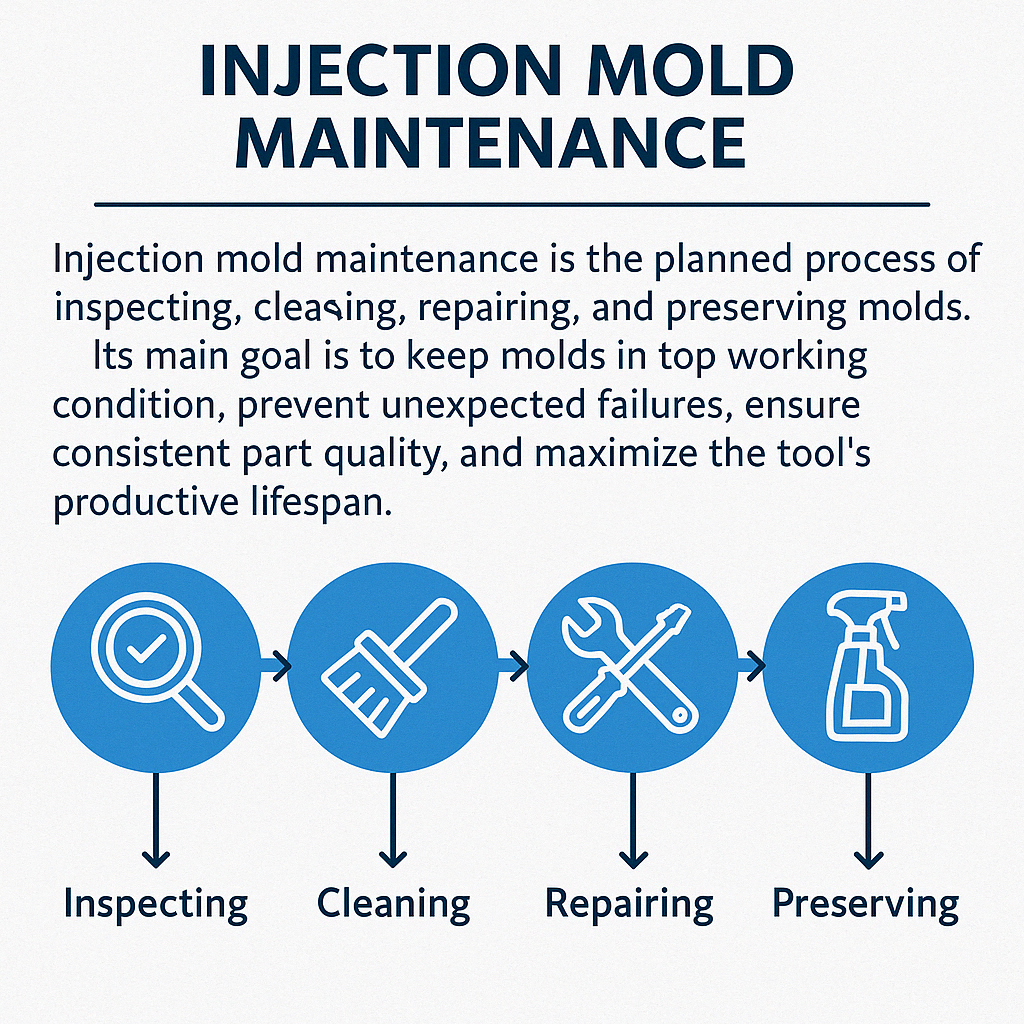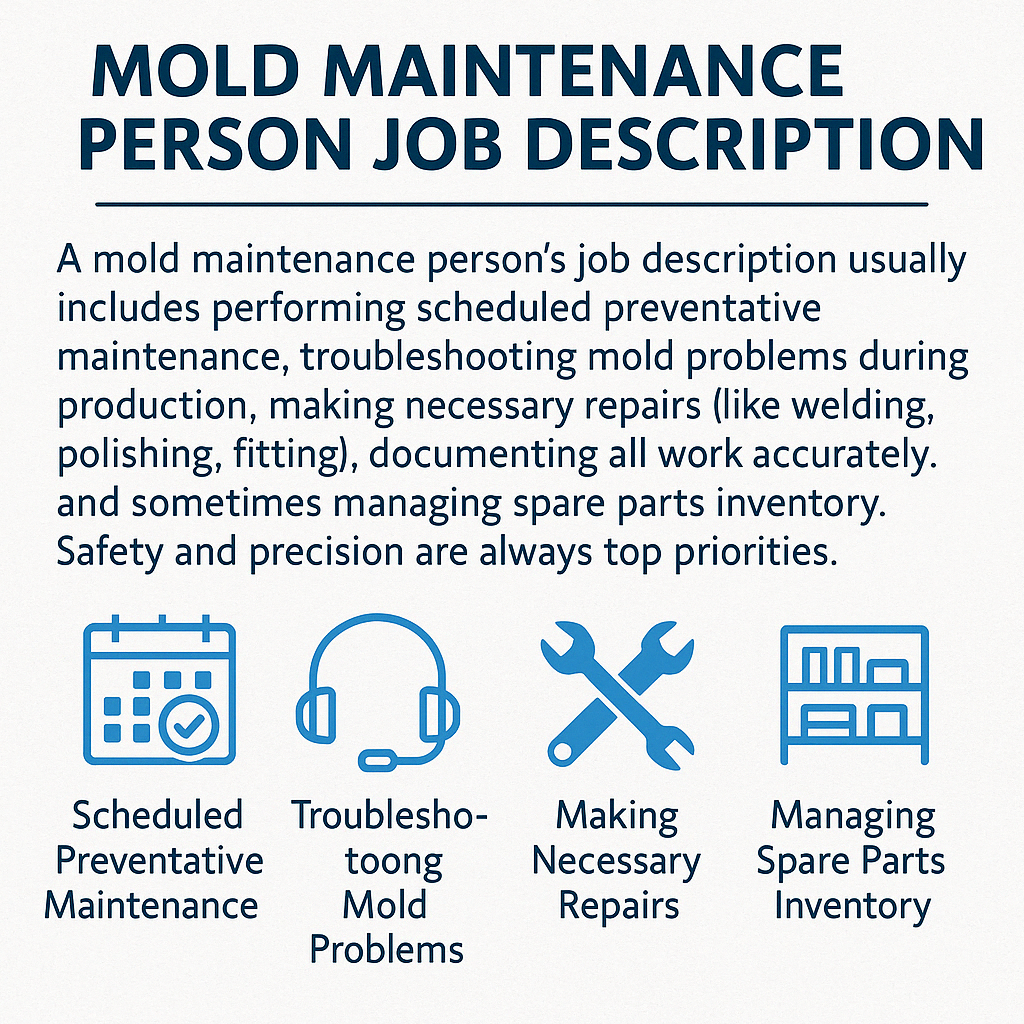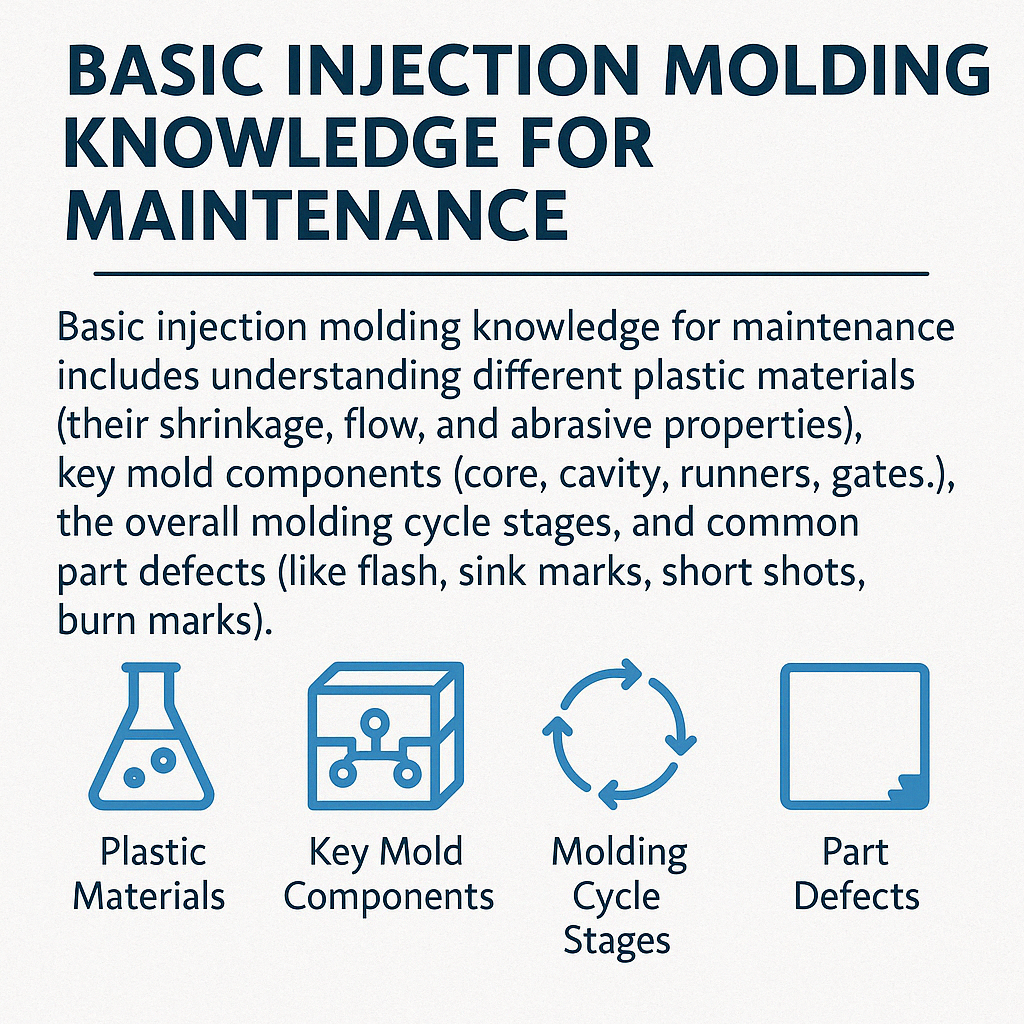Molds breaking down cause huge delays in production. This costs time and money, frustrating everyone involved. Good maintenance skills are essential to prevent this headache and keep things running.
Key maintenance skills include mechanical aptitude, troubleshooting, precision cleaning, polishing, sometimes welding, understanding hydraulics/pneumatics, and reading technical drawings. These skills ensure molds operate correctly, produce quality parts, and last much longer.
Knowing what skills are needed is the first step. But how do these skills apply in the real world of a busy factory? It's crucial to understand the daily tasks involved. At TENGJIN MFG, we deeply value maintenance. We know it requires dedicated workers who truly care. This commitment is why we offer lifetime maintenance support for the molds we build for our clients. Let's look closer at what maintenance involves.
What does a maintenance technician do in injection molding?
Are you unsure what a mold maintenance technician actually does all day? Their often unseen work is vital for preventing costly production stops. Understanding their specific tasks highlights their value to the whole operation.
An injection molding maintenance technician inspects, cleans, repairs, and sometimes modifies molds. They troubleshoot problems during production runs, perform scheduled preventative maintenance, and carefully document their work to ensure mold longevity and consistent part quality.
Let's dive deeper into their day-to-day activities. A technician's job is very hands-on. They carefully take molds apart, clean every component, especially [cooling channels](https://www.upminc.com/resource/the-importance-of-cooling-channels/)1 and vents. They check critical parts like [ejector pins](https://waykenrm.com/blogs/ejector-pins-injection-molding/)2, slides, and lifters for wear or damage. If parts are worn, they replace them. Polishing mold surfaces to the required finish is also a key task. Sometimes, minor repairs involving welding or grinding are necessary. After cleaning and repairs, they meticulously reassemble the mold and often test it. This requires a good understanding of how the mold functions. I've seen firsthand that technicians who are not just skilled but also incredibly dedicated and careful make all the difference. They catch small issues before they become big problems.
Here’s a breakdown of common tasks and the skills needed:
| Task | Key Skills Required | Importance |
|---|---|---|
| Inspection & Diagnosis | Observation, Troubleshooting, Measurement | Identifies potential problems early |
| Cleaning (Channels, Vents) | Attention to Detail, Patience | Prevents part defects, ensures smooth operation |
| Repair & Modification | Welding, Machining, Polishing, Hand Skills | Extends mold life, fixes operational damage |
| Preventative Maintenance | Following Schedules, Documentation | Avoids unexpected costly breakdowns |
| Assembly & Testing | Precision, Mechanical Aptitude | Ensures correct function after service |
What is the maintenance of injection molds?
Do you think mold maintenance is just about simple cleaning now and then? Neglecting proper maintenance leads directly to poor quality parts and eventually broken tools. It's a critical, systematic process for any successful molding operation.
Injection mold maintenance is the planned process of inspecting, cleaning, repairing, and preserving molds. Its main goal is to keep molds in top working condition, prevent unexpected failures, ensure consistent part quality, and maximize the tool's productive lifespan.

Why is this process so important?
Molds are precise tools. Maintenance ensures they hold tight tolerances, producing parts that meet specifications. It maintains the required surface finish on the plastic parts. Proper upkeep prevents common molding defects like flash (plastic escaping the cavity) or short shots (incomplete parts). It also keeps cooling channels clear for efficient production cycles. Most importantly, regular maintenance maximizes uptime by preventing sudden, costly breakdowns. There are different levels of maintenance. Preventative maintenance is scheduled based on cycles or time. Corrective maintenance happens when something breaks unexpectedly. Good practices focus heavily on prevention. This includes quick in-press cleaning between runs and more thorough bench maintenance (minor and major) at scheduled intervals. Each type requires specific skills and careful attention. Neglecting any level increases the risk of problems down the line.
Here’s a look at the different types:
| Maintenance Type | Frequency | Typical Activities | Goal |
|---|---|---|---|
| In-Press Cleaning | Every shift or run | Wipe parting line, check ejectors, visual inspection | Quick checks, prevent immediate buildup |
| Preventative (Minor) | Scheduled cycle count | Basic disassembly, clean vents/pins, lubricate moving parts | Catch minor issues, perform routine upkeep |
| Preventative (Major) | Longer intervals | Full disassembly, deep clean all components, check wear | Thorough inspection, prevent major failures |
| Corrective | When failure occurs | Repair damage, replace broken components | Restore mold function quickly |
|
What is the job description of a mould maintenance person?
Are you thinking about hiring a mold technician or just curious about the role? A vague job description might attract candidates without the right skills. Knowing the specific duties ensures you find someone truly capable and dedicated.
A mold maintenance person's job description usually includes performing scheduled preventative maintenance, troubleshooting mold problems during production, making necessary repairs (like welding, polishing, fitting), documenting all work accurately, and sometimes managing spare parts inventory. Safety and precision are always top priorities.

Let's break down the role further. The job involves a mix of planned tasks and reacting to problems.
Daily and Regular Tasks
Technicians perform daily checks on molds running in production. They execute scheduled preventative maintenance based on cycle counts or time. This involves taking the mold out of the press for bench work. They must accurately diagnose issues reported by the production team.
Key Responsibilities
Their primary responsibility is the health of the molds. This means ensuring mold safety features are functional. They work to maximize the tool's lifespan through proper care. Minimizing machine downtime due to mold issues is crucial. They contribute directly to part quality by keeping the mold in spec. Detailed record-keeping of all maintenance activities is also essential for tracking history and planning future work.
Essential Skills and Qualifications
A strong mechanical aptitude is fundamental. Specific skills like TIG welding (for minor repairs), precision grinding, and hand polishing are often required. The ability to read and interpret mold blueprints and technical schematics is vital. Good problem-solving skills are needed for troubleshooting. Extreme attention to detail prevents mistakes during assembly. Safety consciousness is non-negotiable. In my experience building TENGJIN MFG, the best technicians are not just skilled; they are incredibly meticulous and take real ownership of their work. They understand how critical their role is.
What is the basic knowledge of injection molding?
Does a maintenance technician really need to understand the basics of injection molding itself? Absolutely. Trying to maintain a mold without understanding the process is like fixing a car engine without knowing how combustion works. It leads to guesswork. Understanding the process makes maintenance much more effective.
Basic injection molding knowledge for maintenance includes understanding different plastic materials (their shrinkage, flow, and abrasive properties), key mold components (core, cavity, runners, gates, cooling, ejectors), the overall molding cycle stages, and common part defects (like flash, sink marks, short shots, burn marks).

This knowledge directly impacts how maintenance is performed. Understanding plastic material behavior is crucial. For example, knowing a material's shrinkage rate helps diagnose why parts might be out of tolerance. Knowing if a plastic is abrasive tells the technician which mold components might wear faster and need closer inspection or specific surface treatments. Familiarity with all mold components – the core and cavity that form the part shape, the runner and gate system that delivers plastic, the cooling channels that solidify it, and the ejector system that removes the part – is essential. If a technician understands how each part functions during the molding cycle (injection, packing, cooling, ejection), they can better diagnose why it might fail. Recognizing common part defects is also key. When a technician sees burn marks on a part, they know to check the mold's venting. If they see flash, they investigate the parting line seal or clamping force. This knowledge elevates a technician from simply fixing broken parts to proactively maintaining the mold based on the process requirements.
Here’s how knowledge connects to maintenance:
| Molding Knowledge Area | Relevance to Maintenance | Example Task Improved |
|---|---|---|
| Plastic Materials | Understand wear, corrosion, shrinkage, flow issues | Selecting appropriate cleaning methods, diagnosing tolerance issues |
| Mold Components | Know function, common failure points, assembly | Efficiently diagnosing sticking ejector pins or blocked gates |
| Molding Process | Understand forces, temperatures, cycle impact on mold | Identifying excessive wear caused by high pressure or temperature |
| Part Defects | Diagnose mold problems based on finished part appearance | Locating and cleaning blocked vents causing burn marks |
Conclusion
In the end, successful injection molding heavily depends on skilled and diligent maintenance. Technicians need a blend of hands-on mechanical skills, process understanding, and a dedicated attitude. This keeps production efficient and ensures quality. This dedication is why we proudly offer lifetime maintenance support at TENGJIN MFG.

